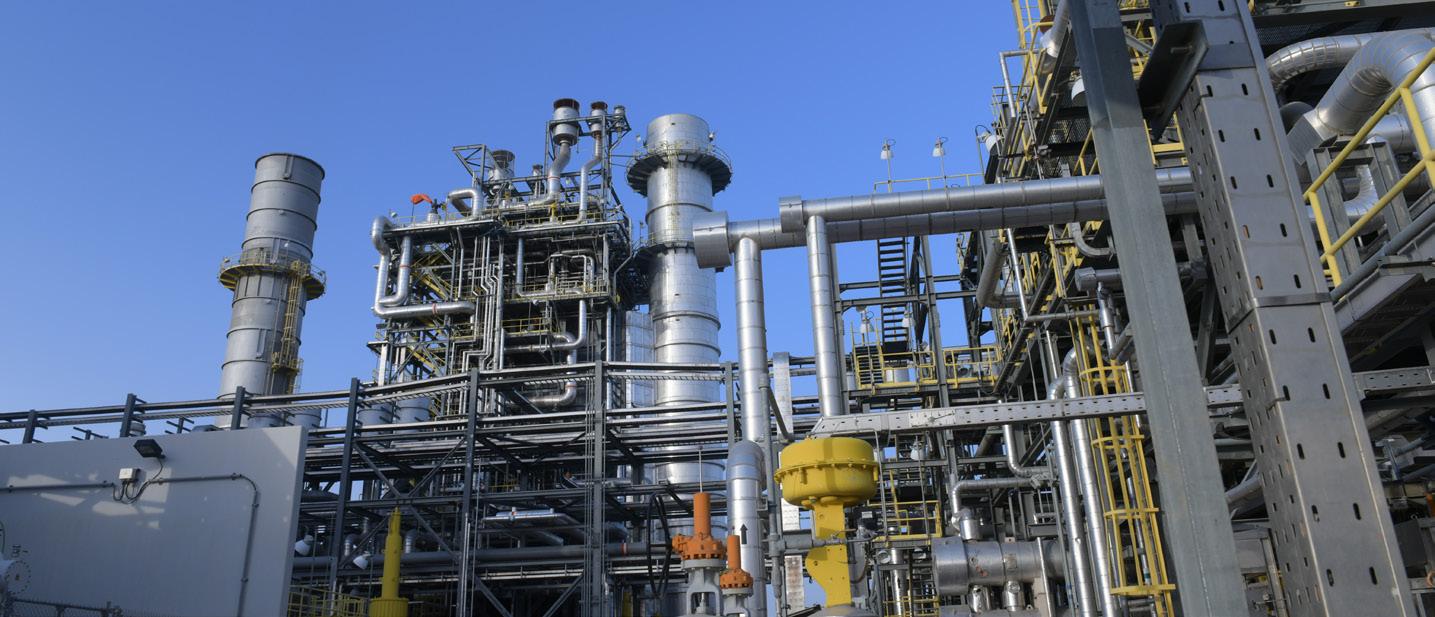
5 minute read
Navigating the energy transition: The critical mix of finance, technology and policy for green investment
Dr Valentina Dedi, Lead Economist at KBR, explores how the right mix of supportive policies, financial mechanisms, and technological innovation can de-risk investments in carbon capture, utilisation and storage (CCUS) and maximise the potential for green investment amid uncertain times, while also addressing the role of oil and gas in the transition.
The global community finds itself at a pivotal moment in the battle against climate change. As the urgency to transition from a fossil fuel-dominated energy system, heavily reliant on oil and gas, to one driven by greener sources intensifies, governments and investors alike are managing the challenges and opportunities presented by this shift.
Governments around the world have acknowledged the urgency of accelerating the energy transition and have prioritised capital allocation in their national and energy policies. The Paris Agreement sets ambitious targets for reducing greenhouse gas emissions and limiting global temperature rise to well below 2°C above pre-industrial levels. Meeting these targets requires an unprecedented level of investment in clean energy technologies and infrastructure.
According to S&P Global Platts, if the targets agreed by the world’s major economies under the Paris Agreement were to be met by 2050, it would mean more than $5 trillion in investment each year between now and 2050. To put this into perspective, this is equivalent to investing more than today’s size of Germany’s entire economy every year for the next two and a half decades. This scale of investment is well beyond what government budgets can afford. Large-scale private sector engagement will be critical too, including from the oil and gas industry.
In recent years, significant capital has been directed towards energy transition projects. However, these investments have been largely constrained to commercially viable projects, primarily favouring renewable power generation, such as wind and solar. These technologies have matured and are now market-ready thanks to a continuous decline in technology costs and the advances in efficiency over the past decade. While they are crucial to the energy transition, they alone cannot address the full scope of the challenge, and especially in decarbonising the hard-to-abate sectors.
The decarbonisation potential of CCUS projects CCUS has the scope to play a pivotal role in the latter sectors. It can be readily deployed at fossil fuel power plants and industrial facilities, such as cement, iron and steel, and chemicals, where CO2 is captured and stored or used to create products such as fuels and chemicals (CCU). CCUS can also provide a low-cost pathway for low-carbon hydrogen production, which can further contribute to the decarbonisation of the industry and transportation sector, or it can enable the removal of CO2, which is unavoidable or technically difficult to abate, directly from the atmosphere through Direct Air Capture with Storage (DACS) or Bioenergy with CCS (BECCS). This technology is particularly relevant for the oil and gas industry, as it can help mitigate emissions from their operations and products.
Although the adoption of CCS has lagged behind initial projections, there has been a substantial increase in activity and interest in recent years. Across the globe, novel technologies are being piloted with the goal of driving down expenses for both the power generation and industrial sectors. In addition to chemical absorption and physical separation, the two most advanced capture technologies, other separation technologies are also being tested, including membranes and looping cycles.
To meet net-zero targets, CCUS deployment must increase by several orders of magnitude within the next two to three decades. In the case of the US, it would mean a scale up to as much as 100 times today’s levels, according to the US Department of Energy’s Office of Clean Energy Demonstrations (OCED). While an ever-increasing number of projects across the entire value chain are being announced, only a fraction of them can take a final investment decision.
CCS is not a new technology, but the challenge lies in its economically large-scale deployment as investors face several uncertainties and risks. These can entail technology failures, cost overruns, extended timeframes, and high capital costs, among others. Another significant risk factor is the lack of clarity with respect to the demand outlook, which makes it challenging for investors to understand the scale of opportunity, and, thus, for projects to reach a financial investment decision. Scaling up the infrastructure needed to transport and store captured CO2 also requires the development of new business models which secure the required revenue streams, as well as partnerships between emitters, technology providers, and storage operators. The oil and gas industry, with its expertise in managing large-scale infrastructure projects and subsurface storage, can play a key role here.
The importance of policy and regulation
Realising the full potential of the CCUS technology, especially at these early stages, will require continued policy support and collaboration between governments, industry, and investors.
Coming up with the right policy framework and financing and incentive mechanisms will be critical. Governments and policymakers must establish an environment which creates stability and revenue predictability to attract the required investment and support the acceleration of the technology.
Thus, setting clear targets and priorities over the short-, medium- and long-term, including legally binding policy and regulatory frameworks, will be crucial to minimise policy uncertainty. At the same time, policy efforts should centre around the introduction of de-risking mechanisms and incentives that support green growth and foster green investment. This is especially pertinent for technologies and infrastructure, such as CCUS, which stand at a risky point of their deployment curve. This can be achieved through a wide range of instruments and approaches, including innovation funding, carbon pricing instruments, carbon credits, tax incentives, guarantees, and low interest loans, among others.
Recent policy developments in the US, such as the Inflation Reduction Act and the Infrastructure Investment and Jobs Act, have started driving investment in clean energy technologies. The Inflation Reduction Act, in particular, is expected to be a game-changer for the CCS industry as it provides significant tax incentives for capturing and storing carbon dioxide. At the same time, as the UK envisions to become a global technology leader for CCUS, the government announced a funding of £20 billion to support the initial deployment of projects, aiming to unlock further investment from the private sector as it provides the much-needed certainty to investors. Back in 2011 and 2015, a lack of agreement on government budgeting and capital allocation, in tandem with a lack of understanding of the commercial risks had led to CCUS project cancellations in the UK.
The path forward
Mobilising the capital needed to achieve the ambitious targets will require careful design of policies, financing mechanisms & incentives, and innovation funding. These measures must work together to de-risk investments, boost capital availability, and ultimately make clean energy technologies economically sustainable. The oil and gas industry has a critical role to play in this transition, by leveraging its expertise, infrastructure, and financial resources to support the deployment of CCUS and other low-carbon technologies.
The path to a sustainable energy future is complex and challenging, but it is also filled with opportunity. By harnessing the power of policy, technology, and finance, we can unlock the vast potential of green investment and accelerate the transition to a low-carbon economy. Governments must continue to lead the way, while at the same time, the private sector steps up and embraces its role as a catalyst for change, channelling capital towards innovative technologies. Recent policy developments in the US and Europe are a promising sign of the growing momentum behind the energy transition. However, much more needs to be done.











